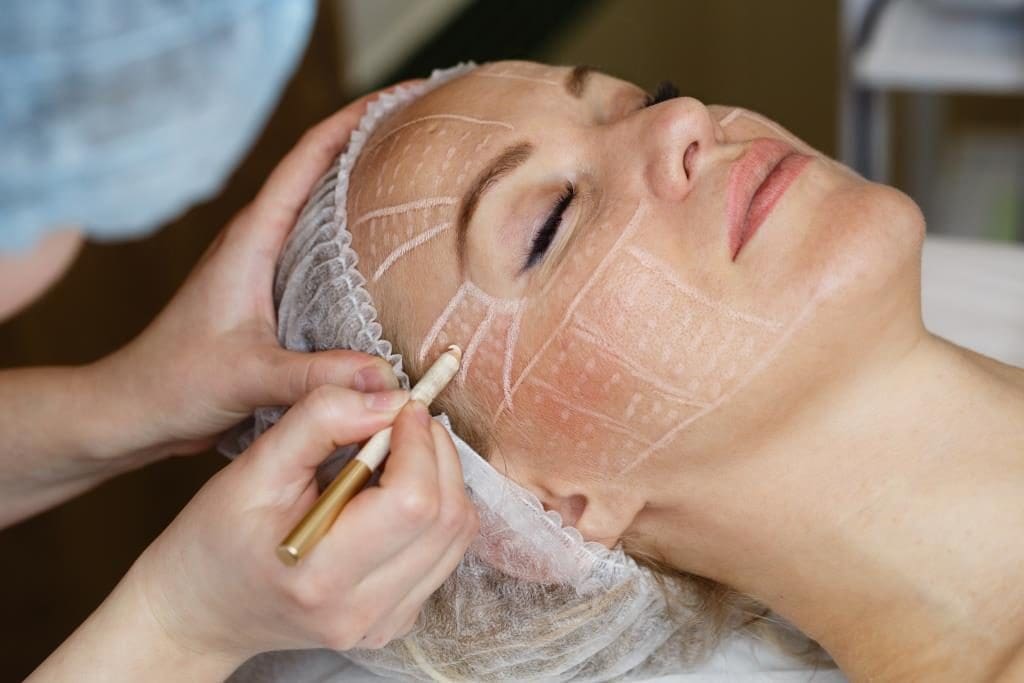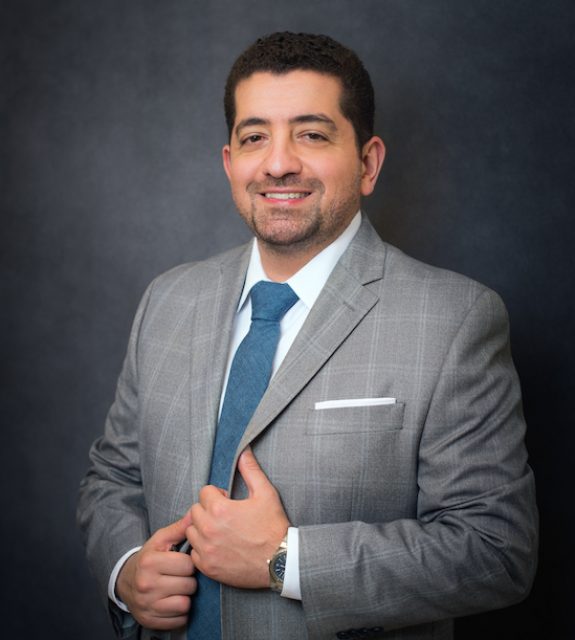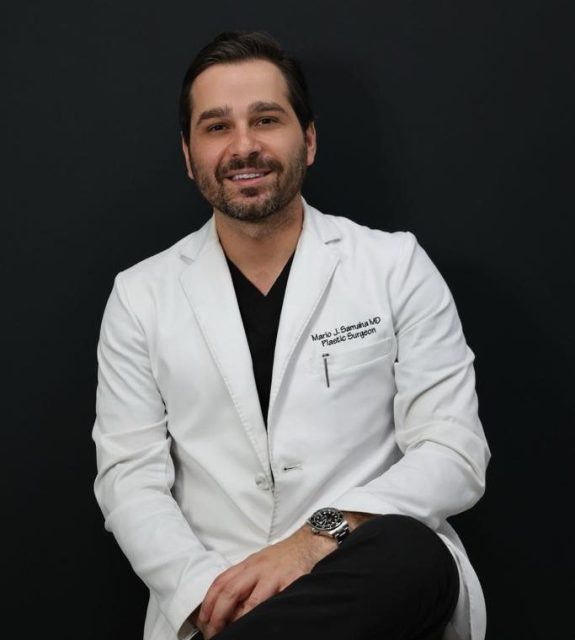Potent on their own, when blended together, plastic surgery and dermatology can augment the benefits of each other. Yet, few practices possess the resources and expertise to offer the best of both. Staffed by both board-certified plastic surgeons and a dermatologist, Aesthetx is not among them. Here, the marriage of aesthetic surgery and dermatology is a daily occurrence, and Haute Beauty talked to Dr. Amelia K. Hausauer (board-certified dermatologist) and Dr. Kamakshi R. Zeidler (board-certified plastic surgeon) to learn more about it.
How often do you have cases where you combine dermatology and plastic surgery? How do you assess and advise patients who can get the most by combining the two but might not be aware of such an option themselves?
Dr. Zeidler: Combination therapies are some of our most popular. Some good examples are laser resurfacing of the face, neck, or decolletage to erase sun damage during a facelift or body procedure. This can be done in the operating room while the patient is already under anesthesia. Another major area of collaboration is scar management. In our practice, Aesthetx, we have a healing protocol starting with a pre-operative consultation all the way through recovery. This approach lets us address scars early and aggressively to optimize outcomes. We combed the medical literature to find the most scientifically innovative and evidence-based techniques before, during, and after surgery. This is the beauty of having board-certified dermatology and plastic surgery under one roof -- multi-disciplinary conversations that take patient care to another level.
Having said this, many are not aware of the powerful and transformative treatment options available. We all age chronologically and are exposed to ultraviolet radiation or other environmental insults, so nearly everyone can benefit from combination procedures. The trick is figuring out which and how these procedures fit your lifestyle and needs. We like to have these discussions with almost every patient, especially those undergoing procedures in areas of the body that get a lot of sun exposure. In these instances, we know the results are better when dermatologists and plastic surgeons work together.
What are the most common cases where such a blend between dermatology and plastic surgery makes a lot of sense? What are the benefits of it?
Dr. Hausauer: By far, our most common collaborations are for (1) scar revision, to blend fine line scars into the surrounding skin, limit redness, and thin thickened or keloid type scars and (2) laser resurfacing of the skin to soften fine lines and sunspots that surgery cannot address alone.
Many worry about the scars after different types of surgeries. What are the dermatology procedures before and after a surgery (or even during) that can lead to less visible or no scars at all?
Dr. Hausauer: I like to meet my patients prior to surgery to discuss topical or other regimens that prep the skin for injury. Sometimes, it is helpful to use a retinoid to increase skin cell turnover and amp up collagen production even before cutting the surface. In other instances, it is helpful to use a bleaching cream that quiet melanocytes (pigment producing cells) so that they don’t contribute to brown, hyperpigmented scars down the line.
Early after surgery, we can use silicone dressing to facilitate healing and lasers to limit scar thickening, speed up the resolution of bruising, and limit new blood vessel growth that cause pinkness. Other resurfacing treatments like fractionated lasers or microneedling can blend scars into the surrounding skin so that they are less, or ideally barely, visible. I often combine these therapies with platelet rich plasma (PRP or as we call it at Aesthetx, plasmaX) to give a large dose of growth factor that directs wound healing in a more normal and organized fashion.
In areas under tension or where muscles pull to separate the scar, we can use neuromodulators like Botox, Xeomin, or Dyport to soften that contraction and prevent scar widening. There are also topical tapes that work similarly. Steroid injections are also instrumental in preventing or treating thickened, ropey scars called hypertrophic or keloid scars. In our practice, we have a full menu of options that can be customized and added onto any surgical procedure to help enhance and direct skin and soft tissue healing as needed. Together, we have thought long and hard about how to best integrate our services, and because we are all under one roof, patients start down this path early and deliberately.
At Aesthetx, you provide both plastic surgery and dermatology services, meaning that patients do not have to go to another practice. What are the benefits of having a vast range of services available at one-roof and offered by professionals who work together daily?
Dr. Zeidler: We pride ourselves on all being board-certified core aesthetic physicians. This means that our three doctors have all completed full medical training, including residencies and fellowships, in disciplines that focus on these services. Some doctors train in other fields then learn cosmetic procedures on their own or at weekend courses. By being board-certified, it means that we have all done many years of schooling honing these skills. Having all of the services in one place is not only convenient but also ensures quality control. We hold each other to the highest standards and teach one another on a daily basis. In the end, it means you get world class, cutting edge care that draws from very deep and rich backgrounds.
Dr. Hausauer: Another advantage is that we have open and direct lines of communication. I can pull Dr. Zeidler into a room to answers questions or address concerns about a patient that may be beyond my scope of practice, and Dr. Zeidler can pull me into a room for the same, in reverse. There is an organic exchange of expertise and information so patients get the most complete, well-rounded, and timely care.

























